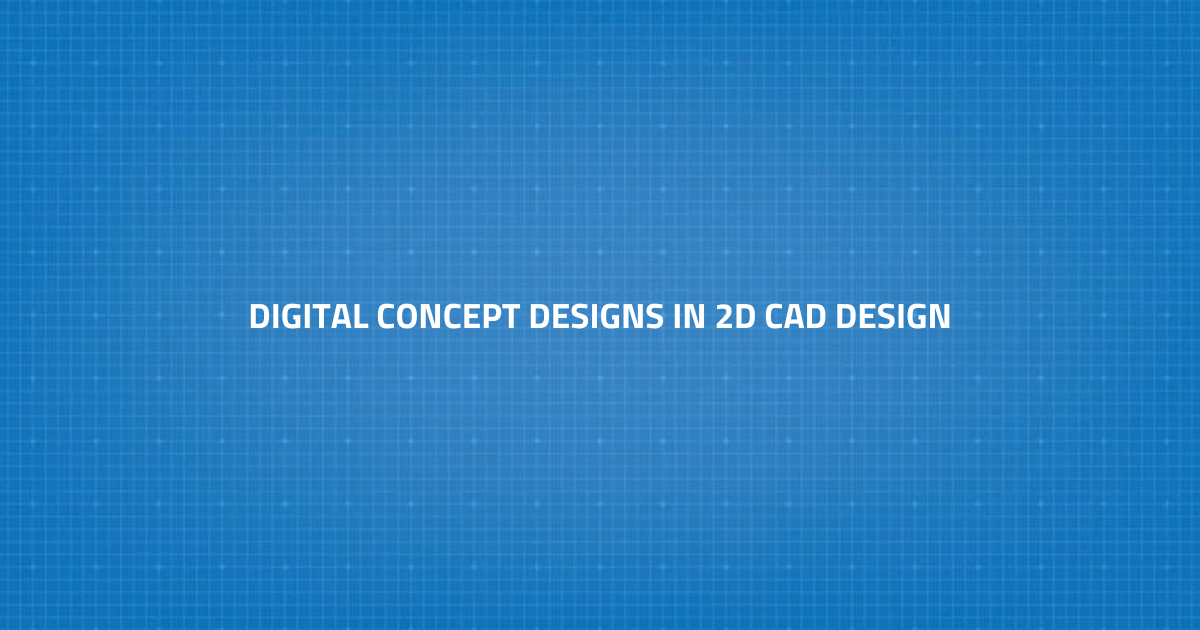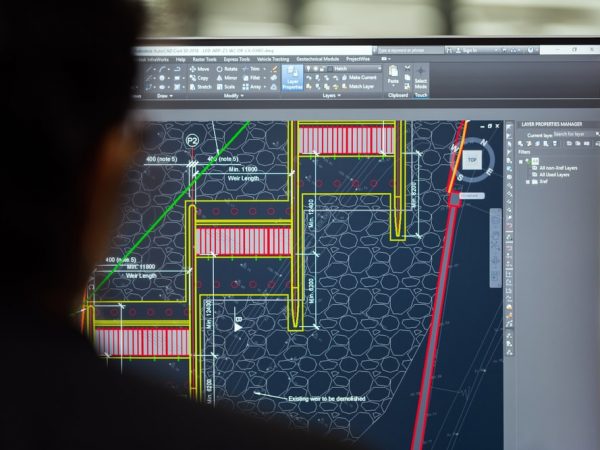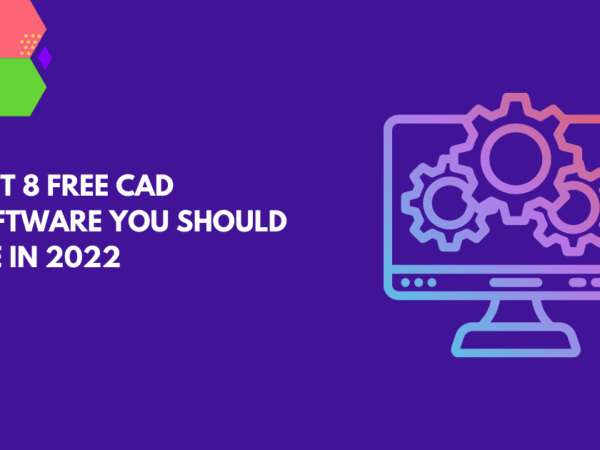
This is a legitimate technique to start concept development, although it has several drawbacks. It may take extra work to move the paper concept designs to the following stage of development. Additionally, it may be more difficult to completely research a variety of design possibilities. What is the justification, though, for switching to digital 2D concept designs?
Compared to manual drawings, CAD has a number of benefits that make it a vital tool in today’s design industry. These benefits are beneficial to modern engineers and product designers in a variety of ways.
A thorough understanding of your notion can be provided by having your idea modeled with CAD because communicating your thoughts clearly is frequently insufficient. Iterative and time-consuming is how manual drawing is traditionally done. There has been a paradigm change from conventional manual drafting to computer-aided design and drafting since the introduction of CAD.
Traditional drafting methods make it simpler to communicate the clarity that may be attained than CAD drawing methods. The creation of manual drawings requires the use of paper, but CAD drawings may be stored and used electronically without the need for paper. By taking over as the main means of expressing design intent, CAD drafting has truly revolutionized the Architectural Engineering Construction sector.
Advantages of 2D CAD design
Since the capabilities are comparable, switching from paper drawings to computer drawings is relatively simple. The representations created in the two media are equivalent, despite the fact that the first employs a pencil and the second a mouse and keyboard. Additionally, sharing electronic sketches and drawings is much simpler.
This increases the effectiveness and efficiency of collaboration for everyone working on a global scale. Additionally, it is considerably simpler to make adjustments to digital 2D CAD designs, allowing for design revisions.
Disadvantages of 2D CAD design
It’s critical to use the appropriate tool for the job because many 2D programs are made more for producing technical drawings than concept design work. Also, keep in mind that 2D CAD drawings cannot be used at all for quick prototyping or as a basis for digital prototyping. Additionally, it is challenging to consider all available design alternatives while using 2D sketches and drawings due to their constraints.
What does this mean for you?
Prototyping, which also applies to paper sketches and drawings, is a drawback of 2D CAD design. While 2D CAD improvements make it easier to use concept design data later in the development cycle, 2D technologies cannot effectively validate concepts. When 2D and 3D tools are connected, you can take full advantage of 2D’s advantages during concept design work before sending the data to your 3D tool for the following stage.
Visualization: It makes it easier to design and visualize 2D or 3D items and make as many modifications as necessary than to sketch them out with a pencil on paper.
Detail: Digital representation in CAD is incredibly precise up to a point because it is so close to reality. As much information as you require can also be added.
Optimization: Even though CAD programs are not perfect, they can be extremely helpful in identifying mistakes made throughout the design phase. You can even conduct simulations in more complex CAD systems to check for flaws.
Specialization: With specific features and tools for each, CAD software is available for practically every professional industry, making it broadly applicable.
Realization: With the aid of fabrication technologies and CAM software, you h
This is a legitimate technique to start concept development, although it has several drawbacks. It may take extra work to move the paper concept designs to the following stage of development. Additionally, it may be more difficult to completely research a variety of design possibilities. What is the justification, though, for switching to digital 2D concept designs?
Compared to manual drawings, CAD has a number of benefits that make it a vital tool in today’s design industry. These benefits are beneficial to modern engineers and product designers in a variety of ways.
A thorough understanding of your notion can be provided by having your idea modeled with CAD because communicating your thoughts clearly is frequently insufficient. Iterative and time-consuming is how manual drawing is traditionally done. There has been a paradigm change from conventional manual drafting to computer-aided design and drafting since the introduction of CAD.
Traditional drafting methods make it simpler to communicate the clarity that may be attained than CAD drawing methods. The creation of manual drawings requires the use of paper, but CAD drawings may be stored and used electronically without the need for paper. By taking over as the main means of expressing design intent, CAD drafting has truly revolutionized the Architectural Engineering Construction sector.
Advantages of 2D CAD design
Since the capabilities are comparable, switching from paper drawings to computer drawings is relatively simple. The representations created in the two media are equivalent, despite the fact that the first employs a pencil and the second a mouse and keyboard. Additionally, sharing electronic sketches and drawings is much simpler.
This increases the effectiveness and efficiency of collaboration for everyone working on a global scale. Additionally, it is considerably simpler to make adjustments to digital 2D CAD designs, allowing for design revisions.
Disadvantages of 2D CAD design
It’s critical to use the appropriate tool for the job because many 2D programs are made more for producing technical drawings than concept design work. Also, keep in mind that 2D CAD drawings cannot be used at all for quick prototyping or as a basis for digital prototyping. Additionally, it is challenging to consider all available design alternatives while using 2D sketches and drawings due to their constraints.
What does this mean for you?
Prototyping, which also applies to paper sketches and drawings, is a drawback of 2D CAD design. While 2D CAD improvements make it easier to use concept design data later in the development cycle, 2D technologies cannot effectively validate concepts. When 2D and 3D tools are connected, you can take full advantage of 2D’s advantages during concept design work before sending the data to your 3D tool for the following stage.
Visualization: It makes it easier to design and visualize 2D or 3D items and make as many modifications as necessary than to sketch them out with a pencil on paper.
Detail: Digital representation in CAD is incredibly precise up to a point because it is so close to reality. As much information as you require can also be added.
Optimization: Even though CAD programs are not perfect, they can be extremely helpful in identifying mistakes made throughout the design phase. You can even conduct simulations in more complex CAD systems to check for flaws.
Specialization: With specific features and tools for each, CAD software is available for practically every professional industry, making it broadly applicable.
Realization: With the aid of fabrication technologies and CAM software, you have the option of bringing your digital design to the real world in the form of a physical product, which would be more challenging and expensive with traditional fabrication methods.
If you’re looking for a 2D CAD design company then feel free to reach out at info@shalindesigns.com or place an enquiry here.
ave the option of bringing your digital design to the real world in the form of a physical product, which would be more challenging and expensive with traditional fabrication methods.
If you’re looking for a 2D CAD design company then feel free to reach out at info@shalindesigns.com or place an inquiry here.



